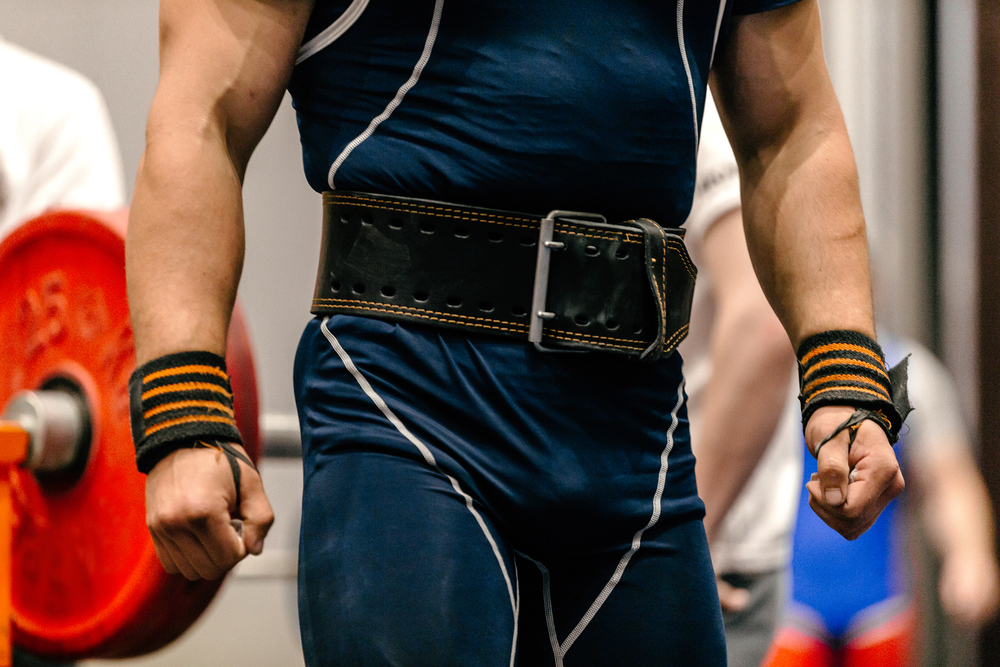
Are you making any of these workout mistakes?
Getting the motivation to exercise is one thing. Making sure you’re working out correctly, and safely, is another.
It wouldn’t be so bad, but when you’re spending precious time and energy in the gym, it’s vital to know that you’re benefitting your body 100% … not heightening your risk of injury.
As a starting point, check the list below to see if you’re making any of the five mistakes.
Don’t worry, you don’t have to admit them to anybody (I was guilty of them all when I started out).
Just be honest with yourself and follow the tips on how to correct each one:
Doing the same stuff
Some people only get to the gym a couple of times a week, at most.
That’s fine, if you vary your workouts and aim to progress as much as possible.
But a common mistake is to stick to the same exercises and same intensities every time you visit.
It’s often brushed off with something like:
“I only get to go a couple of times a week, so I like to work on my chest any chance I get because that’s where I see the best results. And I don’t like to push too hard because my body’s not used to working out enough.”
Correction:
If you only have time to visit the gym a few times a week, then you can use full-body workouts to get the best results.
Of course, I’d recommend you invest more hours into your fitness program if possible. But you will work on your entire body with just 20 minutes of deadlifting on one day, followed by 20 minutes of weighted squats on another.
Safely increasing the weight on each visit can also support your strength development.
It’s better than working on your chest (or any single muscle group) in isolation because you avoid developing what is known as ‘pattern overload’.
Ignoring your body
On the flipside of Number #1 – some people often commit to the gym too much.
If you have an athletic mind, an injury (or any kind of obstacle that threatens your fitness progression) can easily be deemed as ignorable.
A lot of us have a ‘walk it off’ attitude. And it’s dangerous.
For example, if you’re experiencing pain or discomfort in one shoulder, you may automatically compensate for it by straining the other. That’s a double-risk.
Correction:
If you’re tired or in any kind of pain – don’t work out, especially with weights.
Your body is warning you that you cannot perform. Listen to it.
Of course, there are ways to stay fit while recovering from an injury or fatigue. But the gym can be a dangerous place for a vulnerable body and the temptation to lift will always be there.
With approval from your physician, you can practice form at home. Take it slow, avoid using weights and gradually progress until you can execute your regular amount of reps that you’d normally aim for in the gym.
With proper nutrition, plenty of rest, and physiotherapy (if needed), you’ll start to feel stronger again. As you get closer to full recovery, you may be able to return to the gym and do more reps with lighter weights, before making a full recovery.
Never recording performance
This one ties into Number #1.
If you never record your performance, then it’s difficult (if not impossible) to know when to safely push yourself in the gym.
You can end up stuck – only maintaining the same level of fitness or strength, and never improving.
It’s a slippery slope, as just one injury (see Number #2) can interrupt your routine and actually cause a dip in your overall performance – which causes a dip in your fitness that you may never recover from, without measuring progress.
Usain Bolt tries to beat his personal best in every 100m sprint. Imagine he didn’t know what his PB was – do you think he’d push as hard?
Correction:
By ‘recording performance’, I mean things like:
- Weights lifted
- Reps completed with clean form
- Sets completed
- Distance covered
- Speed
- Maximum heart rate
- Average heart rate
There are smartphone apps for this. But a pen and pad is fine (or Excel if you’re a bit of a mathlete and want to convert the data into graphs).
You can take your record-keeping one step further and film yourself performing each exercise (nothing fancy, just a video on your phone will do – best filming from side-on).
Using video, you can analyse and master your form per workout – leading to greater results long-term.
Getting the form all wrong
Clean form is everything.
If you’re wobbling like mad on that ‘one extra rep’, then you’re risking injury and you’re not maximising the efficiency of your workout.
A good personal trainer will never say ‘one more’ to a client unless she believes the client can execute that rep correctly.
At the same time, a good personal trainer will always teach a client how to perform the perfect squat, before adding any actual weight to the exercise.
Correction:
- Study the form
- Practice the form without any weights
- Get a spotting partner
- Record your performance on video
- Restart or exit all workouts as soon as you notice any kind of dip in form
Thinking you’ll lose weight just by working out
If you want to lose weight but don’t want to give up your love for food, then it doesn’t matter how many burpees you’re doing – you can’t get slim on fitness training alone.
Your diet is much more important.
I’ve been surrounded by fitness professionals for the last 10 years – pretty much every one of them agrees that diet and lifestyle is 80% of the battle.
You only need the gym for that final 20%.
Reasons why you might not be losing weight:
- You’re stressed
The stress hormone, cortisol, not only encourages you to comfort eat, it also urges the body to store more fat. - You’re snacking too much
How can anybody say ‘no’ to a single crisp? Before you know it, you’ve eaten half the packet. Get into the habit of judging every single piece of food before you have a taste. - You’re working out too much
If you’re forcing yourself to stick to an overly-intense workout program, then the gym will only become a source of stress for you. Then you’re back to being grumpy and storing too much fat again. - Your body is fighting to maintain a healthy weight
Depending on your age, build, gender and health, you might be at the exact weight you should be. And your body’s trying to maintain that weight despite your mission to get lighter. That’s one of the reasons why we always recommend you consult a physician before taking on any form of workout programme.
Now fundamentally if you are in a calorie deficit – you will lose weight – but add any of the above into the mix and you’re overall health will begin to suffer. Weight loss does not need to be miserable!
Correction:
If you’re avoiding mistakes #1 to #4, then it doesn’t take much to avoid #5.
You want a healthy workout programme that your body responds to. You want safe techniques in each exercise. And you want to check that you’re on track by measuring performance well.
But you also want to maintain a healthy weight.
No matter what your fitness goals, the best thing you can do when it comes to controlling weight is to use a combination of functional strength training and a healthy macronutrient intake
What mistakes have you spotted in the gym?
You probably have your own ideas about what the most common mistakes are amongst gym goers. And you probably have plenty that get on your nerves.
Join the discussion and add to the list using the comments below.






No Comments yet!